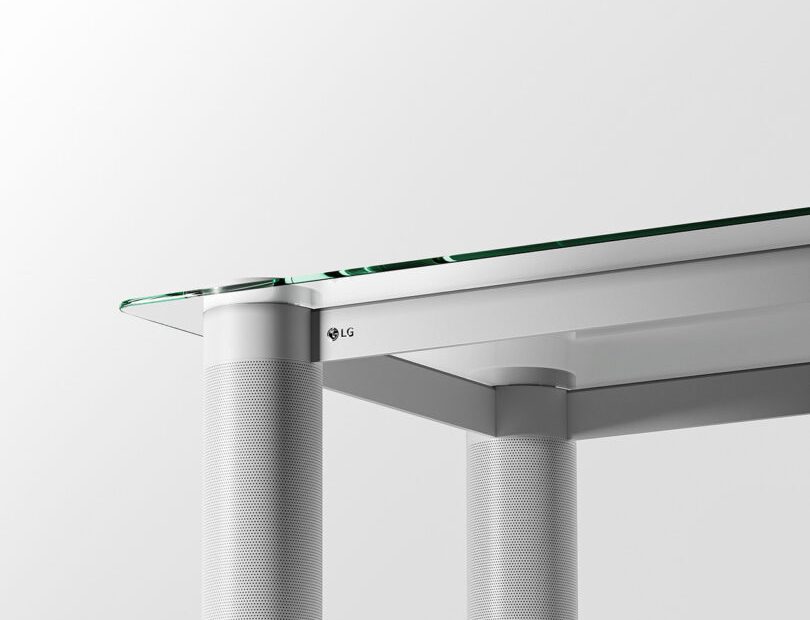Home theater audio and home decor may both share a focus on the domicile, but attempting to recreate the immersive experience of the cinema within the limitations of an average living room often requires compromising the former for the latter. The well-heeled hire audio-visual specialists to integrate speakers, televisions, projectors, and their respective components in seamless blend with decor – no rivulets of cord or systems of cables in view. The average consumer on the other hand typically settles for a single front-firing soundbar, maybe a 2-4 unit surround sound speaker setup, and a subwoofer if space and budget permits. It’s all rather frustrating if you want great sound without the clutter.
Sponsored by LG in partnership with the Korea Design Membership Plus (KDM+) industry + academic program, young Korean designers Jiung Yun, Jisu Lee, Seonjin Baek, and Eunbyeol Yun aimed to develop a system for delivering the “best sound experience without disrupting immersion in the screen,” prioritizing an aesthetically motivated solution where speakers could be easily heard, but mostly go unseen within a living space.
Verre is a concept that proposes an intriguing solution without compromise when it comes to integrating great sound into a home. Instead of attempting to design a set of decor-friendly speakers, the team imagined four speakers built right into each of the legs of a coffee table, bringing 360-degree immersive sound within an intimate proximity.
Verre seamlessly integrates a wireless audio speaker system into each leg of a modern and minimalist coffee table.
“We wanted to get rid of the messy speakers around the TV and make them think the speakers were not in the space, so we did research on various living room forms,” says Jiung Yun. ” As a result, we found out that there was always a table between the sofa and the TV, and we designed verre with the idea that if the speaker becomes a table, it can naturally melt into the space and provide a new experience.”
Aesthetically the table’s speaker legs reference existing devices such as the Xbox console’s perforated case, Bang & Olufsen’s Beosound Emerge, and Beosound Balance, hiding a set of multi-angled drivers within a cylindrical grill that double as table legs. A top firing driver aims upward to possibly add Dolby Atmos-style immersion, with each supporting a plane of glass to complete the sound system’s home furnishing disguise.
Questions arise how audio emitting from a position in such close proximity to those seated may affect how dialogue and sound effects are perceived, noting the incongruity of where we “see” the sound coming from (e.g. from an actor displayed on a screen) versus sound coming from right below the feet. To this point, Verre’s four speaker system seems best suited to handle ambient sound effects or supporting scores of a film or series rather than operate as a primary sound source.
Brands like LG, IKEA, and Samsung, are already offering audio speakers hidden within forms of furnishings such as lamps and wall art. The controversial ceiling lamp that doubles up as a digital projector is another example of home entertainment tech invisibly blending into a living space. It’s possible designs like the Verre table will jump from concept to commonplace as smaller living spaces required of younger generations demand smarter solutions and where double-duty doesn’t feel like a compromise, but a necessity.
This post contains affiliate links, so if you make a purchase from an affiliate link, we earn a commission. Thanks for supporting Design Milk!
